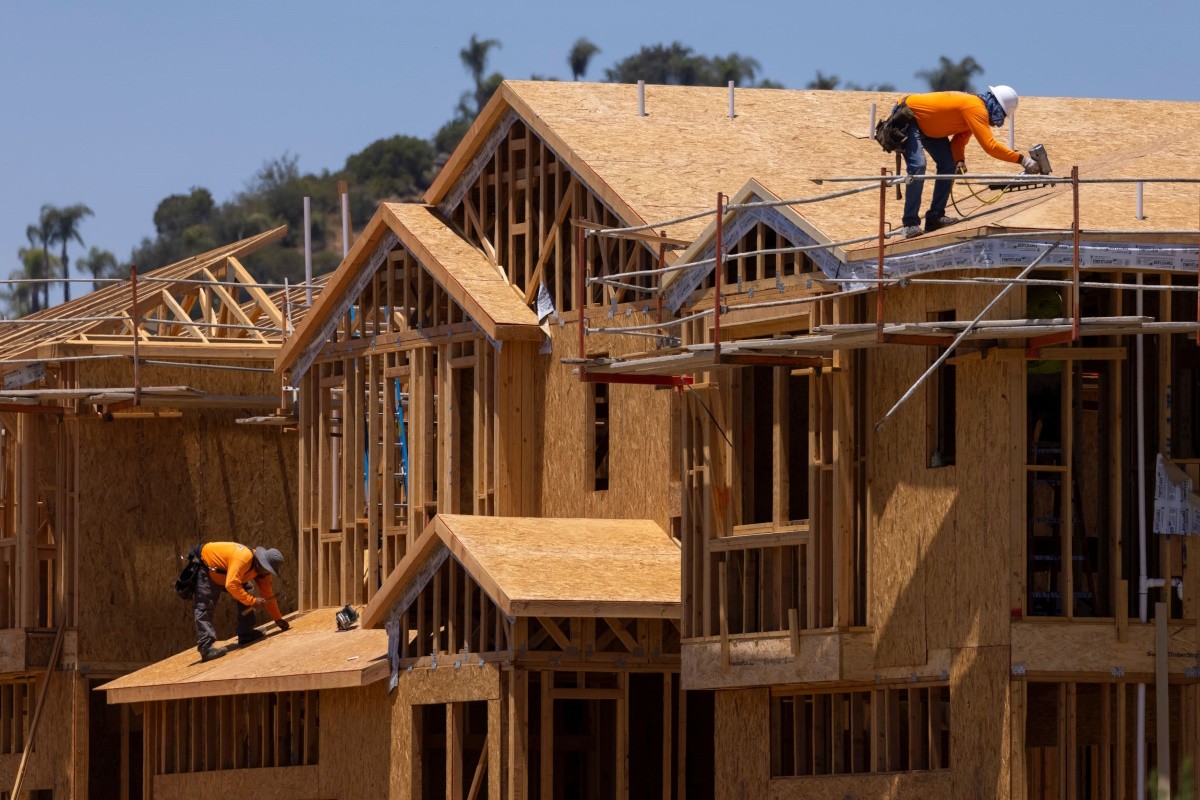Today’s Rate Hikes Threaten to Push Up Tomorrow’s Housing Costs

Central banks in the West are fighting inflation today at the risk of boosting inflation in the future. The Federal Reserve, European Central Bank and policy makers in other developed countries are trying to stop surging price growth by raising short-term interest rates, something that pushes mortgage rates higher. But these efforts threaten to choke off construction and worsen housing shortages. That could push up inflation in the years ahead through higher rents and home prices.
In North America and Europe, higher rates are already contributing to an easing in construction. New building permits for private housing in the U.S. fell by a seasonally adjusted 21.1% in April compared with a year earlier, while construction starts were down 22.3%, according to the Census Bureau. Residential building permits have also been falling in the eurozone—down 13% in the fourth quarter of 2022 from a year earlier—and construction is slowing, according to a Moody’s Analytics analysis of Eurostat data.
High interest rates hurt construction because they make it more expensive for developers to build. They also make it more expensive for households to buy homes, hitting demand for new housing and leading some developers to delay projects. Some economists and real-estate developers expect building activity to drop further if rates stay high. The Fed held interest rates steady in June, but two more rate increases are expected this year, which would lift them to a 22-year high. The ECB last week raised rates again and indicated further increases.
The slowdown in construction comes as many developed countries are already struggling with housing shortages and rising rents, a key component of inflation. In the U.S., shelter accounts for about a third of the consumer-price index and was a key force behind rising prices over the past year. In high-cost cities, where households often spend more than a third of their income on rent, the impact has been greater. “Shelter is the 800-pound gorilla within the CPI,” said Sam Khater, chief economist at Freddie Mac.
In theory, higher mortgage rates and a slowdown in property development should lead to lower construction and land costs as fewer builders compete for sites, materials and workers. But that hasn’t happened yet. Germany’s government has said it expects to miss its target of building 400,000 new apartments a year.
“Traditionally land prices are very sticky,” said Ali Wolf, chief economist at housing-data and consulting company Zonda. Owners of vacant land are often patient and prefer to wait until prices rise again rather than sell at a bargain today, preventing prices from falling. Meanwhile construction costs are still high because of labor shortages and expensive materials. Before Russia’s attack on Ukraine last year, Germany’s construction industry got much of its steel from Russia, Belarus and Ukraine, and switching to new sources has been more expensive, said Felix Pakleppa, head of the trade group German Construction Confederation.
On top of that, the ECB’s decision to raise rates to fight inflation has roughly quadrupled the annual interest on typical construction loans, from less than 1% to almost 4%, Pakleppa said. Higher costs make it harder to turn a profit with new construction, so fewer developers are building. Apartment construction orders in Germany fell by 37.9% in real terms in March compared with a year earlier, according to the country’s federal statistical agency. Germany’s federal government earlier this year said it expects to miss its target of building 400,000 new apartments a year.
Vonovia, Germany’s biggest for-profit apartment landlord, said that it will no longer start any new projects this year, citing higher inflation and interest rates. Chief Executive Rolf Buch said the company will start new projects “when the math works again,” but cautioned that he doesn’t know when that will be. Buch said the consequences of less housing construction would be “brutal” as more households struggle to find homes, adding, “This is a catastrophe for German society.”
Most economists say that central banks have no choice but to raise rates if they want to bring prices under control, even if it comes at the cost of less housing construction. “Inflation is issue number one and that probably does mean policy makers in the short term have to shut their eyes and really kind of ignore what’s happening,” Wolf said.
During previous periods of high interest rates, governments often managed to keep construction going. In the decades after World War II, the U.S. federal government built hundreds of thousands of public-housing units, meaning it could add to supply even at times when higher rates made it harder for private developers to build. And in the early 1980s, around the time when the Fed raised rates quickly to fight inflation, Congress changed tax rules to make rental-apartment development more profitable. The tax change helped cause a construction boom that ultimately contributed to a property bubble and financial crisis but also created plenty of housing.
Today, with Congress divided, federal intervention on that scale is unlikely, shifting the onus to the local level. Freddie Mac’s Khater said more state and local governments could lift zoning restrictions and expedite permitting for new housing to encourage construction and address chronic shortages. “More and more of the problem that [the Fed is] facing is related to housing,” he said. “And that problem is something that they cannot tackle on their own at all.”










